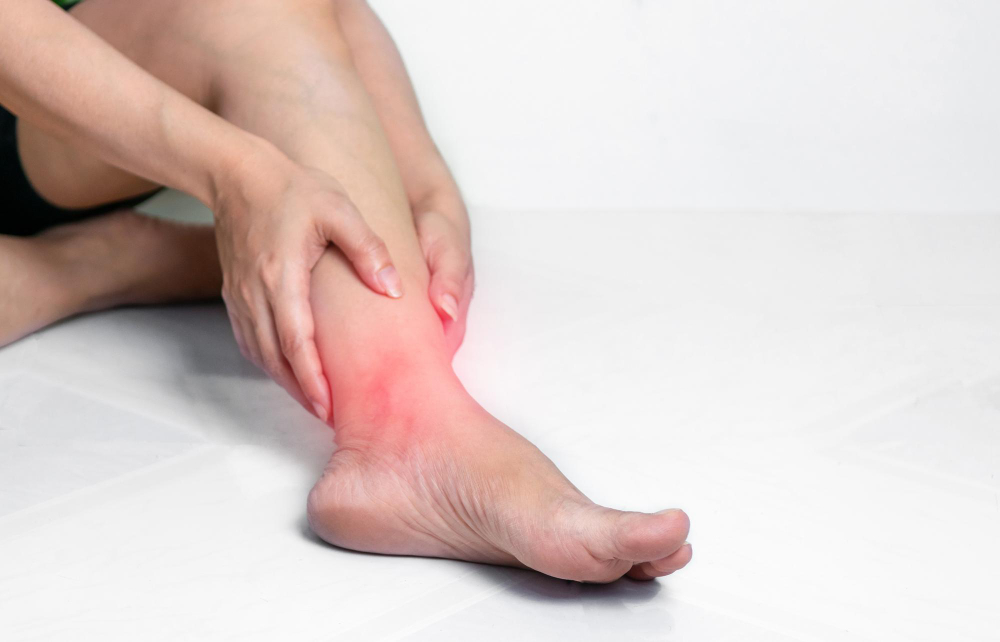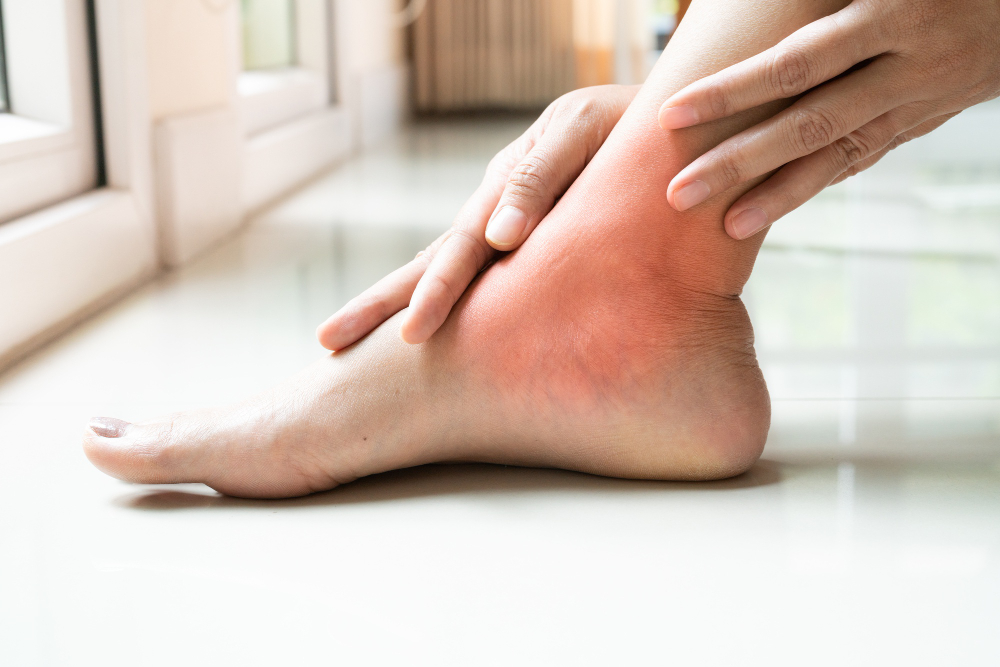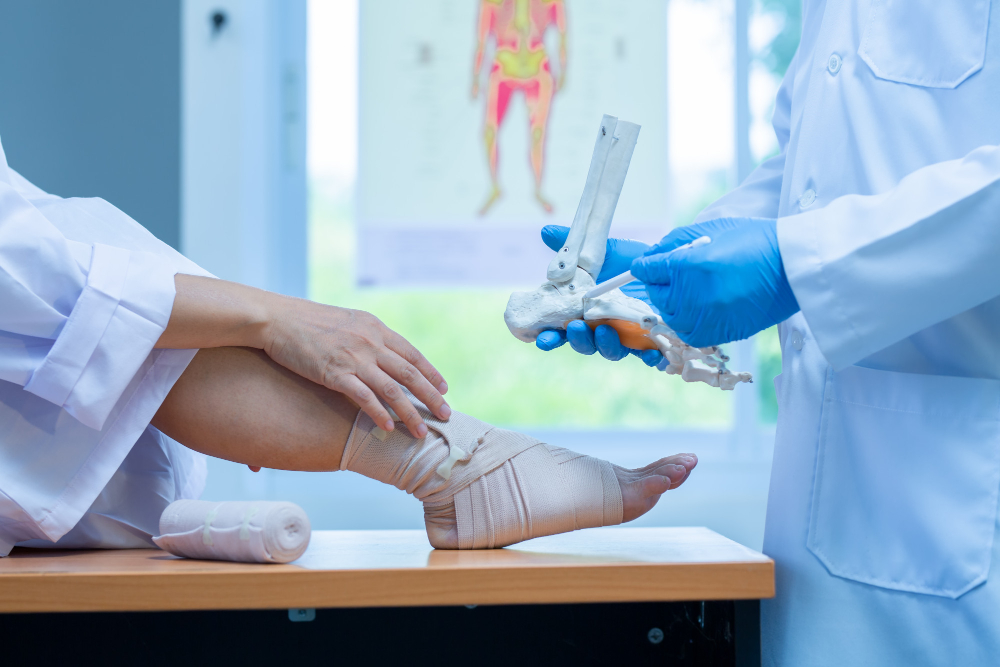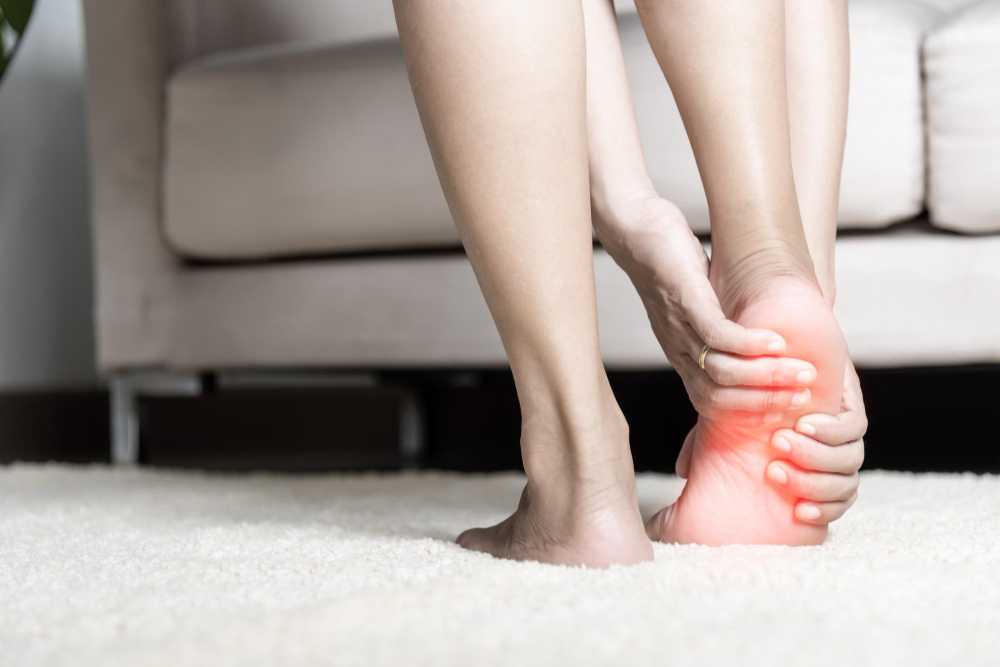Book Now
Services

Achilles Tendinopathy
The Achilles tendon is the largest tendon in the body. It connects your calf muscle to the heel bone. Try pointing your toes. As you do this, notice your calf muscle contracting. Notice this tough band right above your heel bone. That’s the Achilles tendon.
Symptoms
- Pain and swelling of the tendon that worsen with activity.
- Pain and stiffness of the tendon after waking up in the morning or after keeping the ankle in one position for a long time such as when traveling by plane, or while at your desk.

Causes
Activities or injuries that produce a sudden tug to your tendon as well as overuse and demanding a lot of the tendon can cause this condition. Athletes and some people with hobbies that require running, jogging, and jumping. This is also linked to a bone spur (extra bone growth) appearing from where the tendon is attached to the heel bone. This extra bone may put pressure on the tendon which then may cause pain.

Treatment
After informing your doctor of your level of activity, job-related activities, any injury that might have caused this, he then would need to inspect the affected area for any redness and swelling. Gentle palpation and/or squeezing the area may cause jolting pain. Thickening of the tendon can also be observed. Active and passive ranges of motion may be limited due to pain.
- X-rays may be done to determine any bone involvement. Bone spurs, if any, can be identified as well.
- Ultrasound and Magnetic Resonance Imaging (MRI) may be done to visualize soft tissues that are not visible through the x-ray. This can also determine the amount of inflammation.
- To avoid pain, one must need to stop or decrease the activity that causes pain.
- Ice has anti-inflammatory effects. Apply ice a few times in a day to lessen pain and swelling.
- Calf stretches – exercises that bend the ankle or raising the foot – stretches the calf muscle.
- Nonsteroidal anti-inflammatories – your doctor may prescribe these depending on your individual need.
- Physical Therapy – very effective for this condition. Your physiotherapist will teach you exercises and will make sure you are doing the exercises right. He/she will monitor your progress and will help you plan your treatment program.
- Percutaneous Electrolysis Therapy – the best choice for most people, especially athletes, suffering from long term Achilles tendinopathy.
- Surgery – Lastly, if all other pain management is unhelpful because of recurrent pain or if a tendon tear is evident and cannot be managed by just conservative treatments, surgery is recommended.

Prevention
- Increase your activity level gradually. If you're just beginning an exercise regimen, start slowly and gradually increase the duration and intensity of the training.
- Take it easy. Avoid activities that place excessive stress on your tendons, such as hill running. If you participate in a strenuous activity, warm up first by exercising at a slower pace. If you notice pain during a particular exercise, stop and rest.
- Choose your shoes carefully. The shoes you wear while exercising should provide adequate cushioning for your heel and should have a firm arch support to help reduce the tension in the Achilles tendon. Replace your worn-out shoes. If your shoes are in good condition but don't support your feet, try arch supports in both shoes.
- Stretch daily. Take the time to stretch your calf muscles and Achilles tendon in the morning, before exercise and after exercise to maintain flexibility. This is especially important to avoid a recurrence of Achilles tendinitis.
- Strengthen your calf muscles. Strong calf muscles enable the calf and Achilles tendon to better handle the stresses they encounter with activity and exercise.
- Cross-train. Alternate high-impact activities, such as running and jumping, with low-impact activities, such as cycling and swimming.

